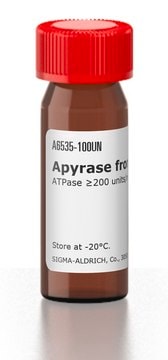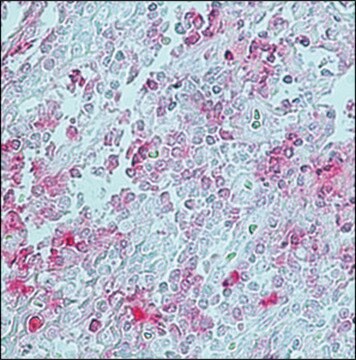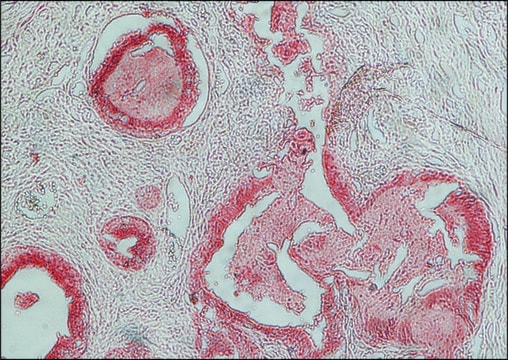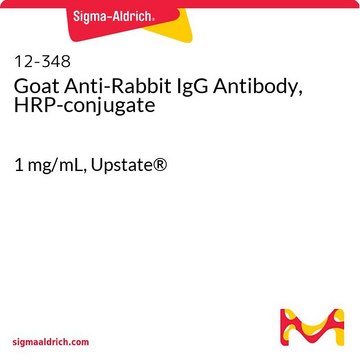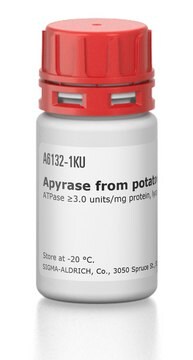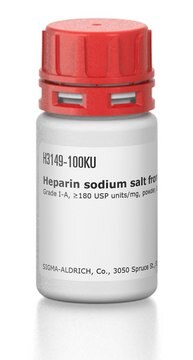A2306
Monoclonal Anti-Rabbit Immunoglobulins−Alkaline Phosphatase antibody produced in mouse
clone RG-16, purified immunoglobulin, buffered aqueous glycerol solution
Sinônimo(s):
Monoclonal Anti-Rabbit Immunoglobulins (IgG, IgA, IgM)
About This Item
Produtos recomendados
fonte biológica
mouse
conjugado
alkaline phosphatase conjugate
forma do anticorpo
purified immunoglobulin
tipo de produto de anticorpo
secondary antibodies
clone
RG-16, monoclonal
Formulário
buffered aqueous glycerol solution
reatividade de espécies
rabbit
não deve reagir com
pig, chicken, bovine, horse, human, guinea pig, turkey, rat, canine, goat, feline, sheep
técnica(s)
direct ELISA: 1:40,000
immunohistochemistry (formalin-fixed, paraffin-embedded sections): 1:160 using human tonsil and Cat. No. I8635 as the primary antibody
western blot: 1:160,000-1:320,000 using detecting β-actin in total cell extract of HeLa cells (5-10 μg per well)
Isotipo
IgG1
Condições de expedição
wet ice
temperatura de armazenamento
2-8°C
modificação pós-traducional do alvo
unmodified
Procurando produtos similares? Visita Guia de comparação de produtos
Descrição geral
Especificidade
Aplicação
- indirect enzyme linked immunosorbent assay (ELISA)
- immunoblotting
- immunohistochemistry
Ações bioquímicas/fisiológicas
Mouse monoclonal anti-rabbit immunoglobulins-alkaline phosphatase antibody binds to an epitope on the heavy chain of rabbit IgG, IgA, and IgM. The product stains bands at the intact whole molecule and at the heavy chains in an immunoblot of denatured, non-reduced rabbit immunoglobulins. Reduction of rabbit immunoglobulins destroys the epitope. In ELISA, the product shows no cross reaction with human serum or tissue preparations, nor with human IgA, IgG, or IgM.
forma física
Exoneração de responsabilidade
Não está encontrando o produto certo?
Experimente o nosso Ferramenta de seleção de produtos.
Código de classe de armazenamento
10 - Combustible liquids
Classe de risco de água (WGK)
WGK 3
Ponto de fulgor (°F)
Not applicable
Ponto de fulgor (°C)
Not applicable
Equipamento de proteção individual
Eyeshields, Gloves, multi-purpose combination respirator cartridge (US)
Escolha uma das versões mais recentes:
Já possui este produto?
Encontre a documentação dos produtos que você adquiriu recentemente na biblioteca de documentos.
Nossa equipe de cientistas tem experiência em todas as áreas de pesquisa, incluindo Life Sciences, ciência de materiais, síntese química, cromatografia, química analítica e muitas outras.
Entre em contato com a assistência técnica